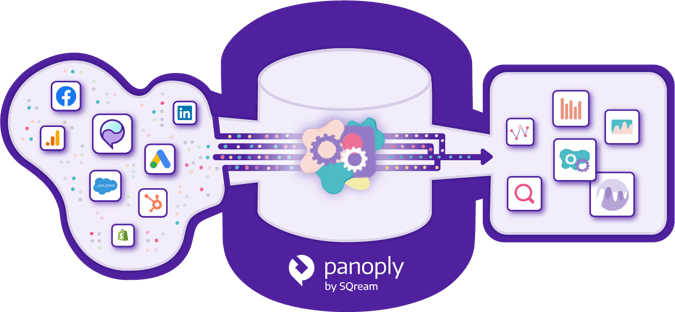The Transformative Power of an All-in-One Data Platform
To create an optimal data strategy, businesses face a key decision when developing their data stack. Should they shop around for different, separate vendors for ELT, data warehousing, and visualizations, or leverage an all-in-one platform that includes these steps. While the allure of specialized tools might be tempting, the business value, not to mention time and cost savings, of an all-in-one solution is, dare we say, even more tempting.
Embracing Variety vs. Unifying Efficiency
Different Steps, Different Vendors:
Some businesses opt for a fragmented approach, either due to limited resources, budget, or the desire for tailored solutions. And there are certainly excellent specialized tools for each part of the data stack! Starting small, especially for startups and SMBs, often means focusing on immediate needs like consolidating data. With this method, the company ends up with multiple vendors, each excelling in a specific domain. Advanced customization and specialized expertise are touted as key advantages in this approach, since businesses can cherry-pick best-of-breed solutions.
However, we do see some drawbacks with "one tool per function". Integration and compatibility complications increase with each additional tool, leading to potential challenges and significantly more time spent building the data stack. Specialized tools also come with a higher price tag, both in terms of finances and operational complexity.
One-and-Done Data:
Conversely, an all-in-one data platform promises a streamlined, easy-to-use experience. Especially beneficial for startups and SMBs with perhaps a small team and limited resources, the advantages are abundant:
- Time and Cost Efficiency: A single, managed tool reduces the time and costs associated with vendor evaluation, selection, and ongoing management. Upgrading or adding features becomes effortless, often accompanied by built-in customer support.
- Seamless Integration: An all-in-one solution eliminates complex integrations between multiple vendors, ensuring a smooth flow of data throughout the platform, from ingestion to insights. The platform's cohesiveness minimizes compatibility issues.
- Faster Insights: In-platform dashboards simplify data analytics, eliminating the need to navigate between tools and visualizations from different vendors.
- Consistency: An end-to-end platform ensures consistency in data structures, formats, and definitions across the entire data pipeline, reducing the risk of discrepancies or errors.
- Better Performance: Tightly integrated components within the platform optimize data processing and storage, enhancing overall system performance.
- Streamlined Support: Dealing with a single support team for the entire platform makes troubleshooting a breeze. You get efficient support with no more wondering who to contact for questions.

Making the Right Choice for Business Growth
The decision between an all-in-one platform and a multi-vendor approach hinges on various factors—business requirements, cost considerations, scalability needs, and the desired level of integration and simplicity. For companies seeking a streamlined, user-friendly data platform and a single source of truth that scales with the business, the all-in-one solution is a compelling choice.
With no-code data connectors, a managed data warehouse, and in-platform dashboards, Panoply can guide your company from zero to insights in minutes, without the complications of multi-vendor integrations.
Want to learn more? Book a demo today to see Panoply in action.
